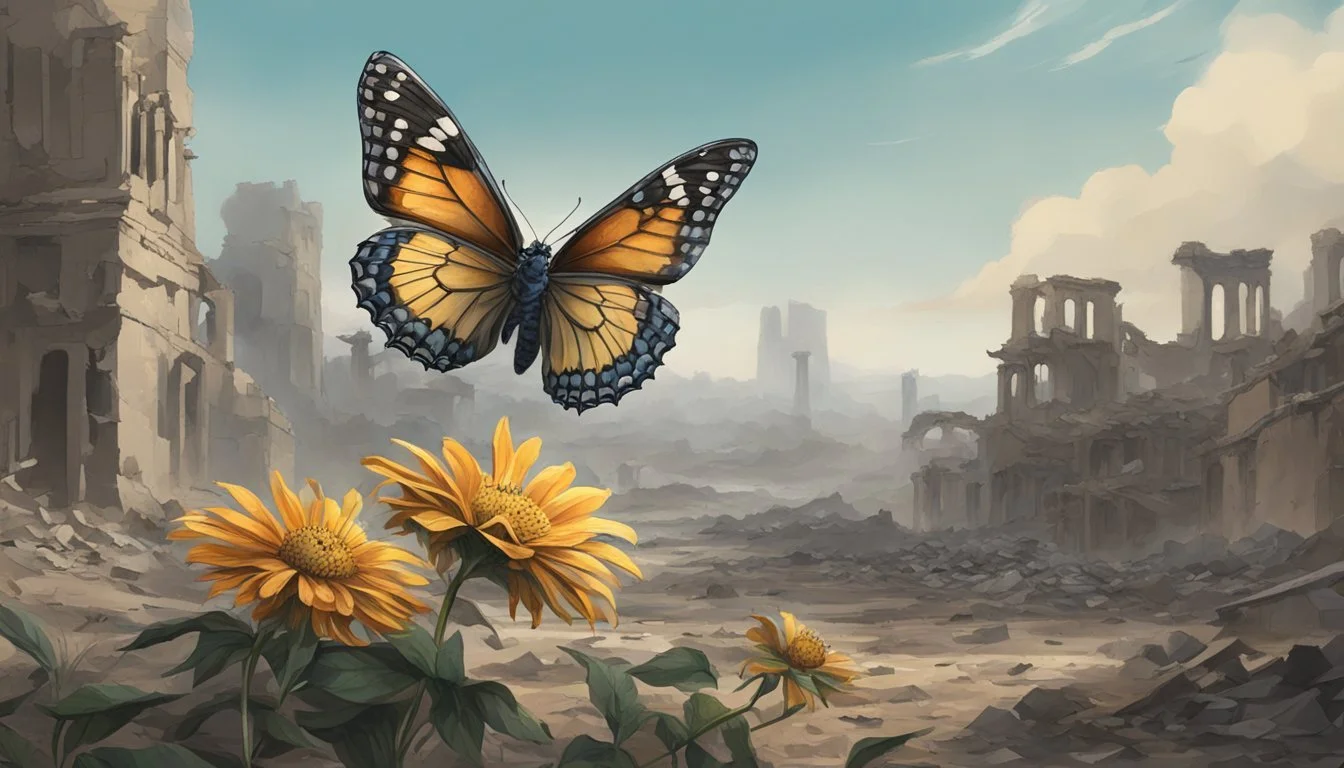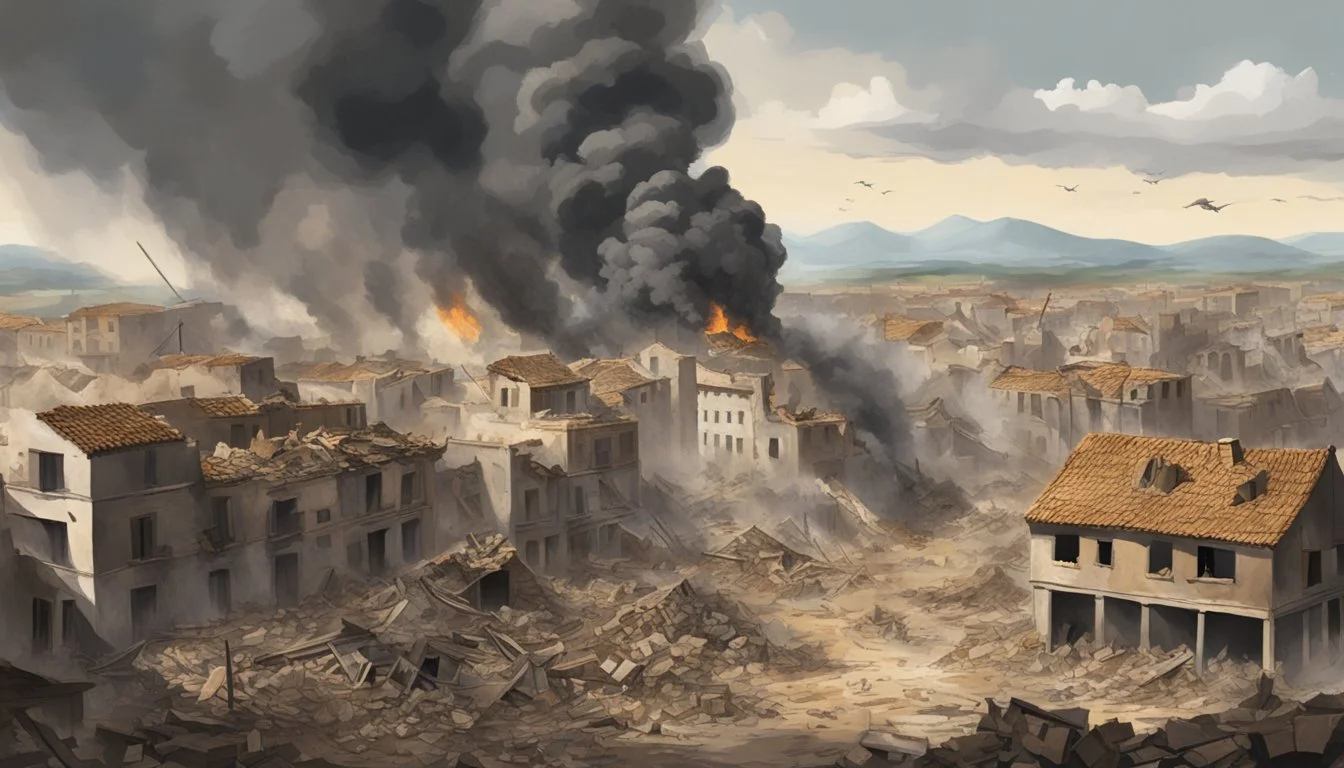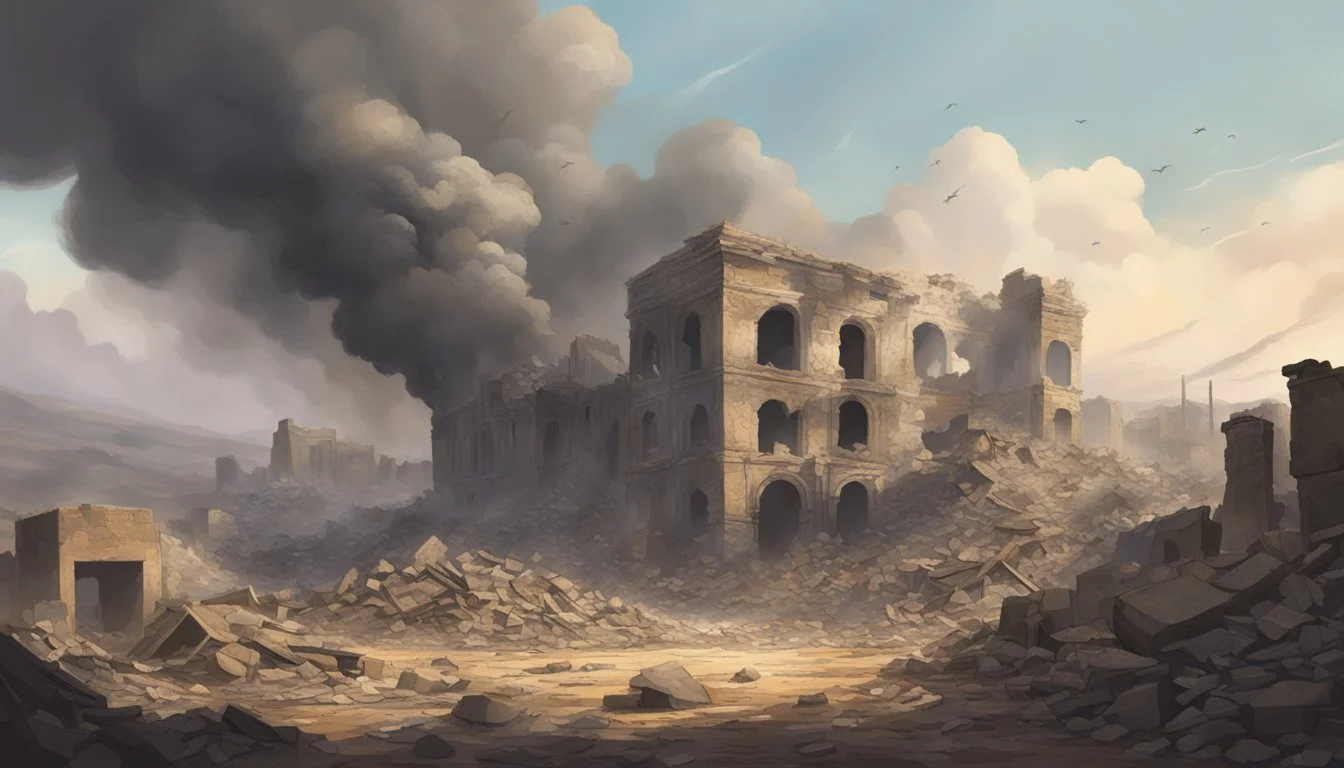7 Haunting Films on Guernica and the Spanish Civil War
Cinematic Reflections on Tragedy
The Spanish Civil War left an indelible mark on history, with the bombing of Guernica standing as one of its most brutal episodes. Artists and filmmakers have grappled with this tragedy for decades, seeking to convey its horrors and lasting impact through various mediums. Their works serve as powerful reminders of the human cost of conflict and the enduring legacy of war.
Cinema has proven particularly effective in exploring the complexities of the Spanish Civil War and the destruction of Guernica. Through haunting visuals and poignant narratives, filmmakers have brought this dark chapter to life for audiences around the world. These films not only educate viewers about historical events but also prompt reflection on the nature of violence and its consequences for society.
1) 'The Spanish Earth' by Joris Ivens
'The Spanish Earth' is a powerful 1937 documentary directed by Dutch filmmaker Joris Ivens. The film offers a gripping portrayal of the Spanish Civil War, focusing on the Republican side's struggle against fascist forces.
Ernest Hemingway and John Dos Passos collaborated on the script, lending their literary expertise to the project. Originally narrated by Orson Welles, the film later featured Hemingway's own voice in some versions.
The documentary captures both the conflict's political dimensions and its impact on everyday Spanish life. It showcases battles in Madrid and along the road to Valencia, providing viewers with a visceral sense of the war's reality.
'The Spanish Earth' stands out for its blend of scripted scenes and authentic footage from the front lines. This approach gives the film a unique authenticity, allowing audiences to connect with the Republican cause on a personal level.
The film's anti-fascist message resonated with many viewers upon its release. It remains a significant historical document, offering insights into the Spanish Civil War's complexities and the era's political climate.
https://en.wikipedia.org/wiki/The_Spanish_Earth
2) 'For Whom the Bell Tolls' by Sam Wood
'For Whom the Bell Tolls' is a 1943 American war film directed by Sam Wood. Based on Ernest Hemingway's novel, it stars Gary Cooper and Ingrid Bergman in leading roles.
The film is set during the Spanish Civil War and follows Robert Jordan, an American volunteer fighting for the Republican side. Jordan's mission is to blow up a strategic bridge, a task that becomes complicated by his romance with a local woman.
Wood's adaptation brings Hemingway's powerful narrative to life on screen. The film's epic scale and dramatic performances earned it nine Academy Award nominations, including Best Picture.
'For Whom the Bell Tolls' captures the tension and tragedy of the Spanish Civil War. It portrays the complex relationships between characters caught in the conflict, highlighting the human cost of war.
The film's cinematography showcases the rugged Spanish landscape, adding to the story's atmosphere. Its exploration of love, duty, and sacrifice resonates beyond its historical context.
[https://en.wikipedia.org/wiki/For_Whom_the_Bell_Tolls_(film)]
3) 'To Die in Madrid' by Frédéric Rossif
'To Die in Madrid' is a 1963 French documentary film directed by Frédéric Rossif. The film provides a powerful examination of the Spanish Civil War, offering viewers a haunting glimpse into this turbulent period of history.
Running for 85 minutes, the documentary utilizes archival footage and photographs to chronicle key events of the conflict. It covers significant moments such as the death of Federico García Lorca, the bombing of Guernica, and the defense of Madrid.
The film also explores the role of the International Brigades in the war. Rossif's direction creates a solemn and serious atmosphere, effectively conveying the gravity of the subject matter.
'To Die in Madrid' received critical acclaim upon its release. It was nominated for an Academy Award for Best Documentary Feature, highlighting its impact and significance in the realm of war documentaries.
The film's narrative is complemented by the voices of Suzanne Flon, Germaine Montero, and Pierre Vaneck. Their contributions add depth to the visual storytelling, enhancing the viewer's understanding of the conflict's complexities.
https://en.wikipedia.org/wiki/To_Die_in_Madrid
4) 'Land and Freedom' by Ken Loach
'Land and Freedom', directed by Ken Loach in 1995, offers a powerful portrayal of the Spanish Civil War. The film follows David Carr, an unemployed British communist who travels to Spain to join the Republican forces against the Nationalist coup.
Loach's film explores the complex political landscape of the conflict, highlighting the tensions between various leftist factions. It depicts the idealism and camaraderie among international volunteers, as well as the harsh realities of war.
The movie is notable for its realistic battle scenes and intimate depictions of soldiers' daily lives. It captures the spirit of revolution and the challenges faced by those fighting for their beliefs.
'Land and Freedom' stands out for its focus on the POUM militia, a Marxist organization that fought alongside anarchists. This perspective provides insight into lesser-known aspects of the war's political dynamics.
Through David's experiences, the film examines themes of idealism, disillusionment, and the human cost of conflict. It offers a nuanced view of the war's impact on individuals and communities.
[https://en.wikipedia.org/wiki/Land_and_Freedom_(film)]
5) 'Butterfly's Tongue' by José Luis Cuerda
'Butterfly's Tongue' is a 1999 Spanish film directed by José Luis Cuerda. Set in Galicia in 1936, the movie explores the relationship between a young boy named Moncho and his teacher Don Gregorio.
The film portrays the coming-of-age experience of Moncho against the backdrop of the Spanish Civil War. It delicately weaves themes of innocence, education, and the impact of political upheaval on ordinary lives.
Cuerda's direction brings to life the lush landscapes of northwestern Spain, creating a visually stunning backdrop for the story. The film's narrative is based on stories by Manuel Rivas, adding depth to its portrayal of the era.
'Butterfly's Tongue' stands out for its nuanced exploration of human nature during a turbulent historical period. It showcases the transformation of individuals under the pressure of authoritarian rule.
The movie features notable contributions from Rafael Azcona and Alejandro Amenábar, two significant figures in Spanish cinema. Their involvement adds to the film's artistic merit and cultural significance.
6) 'Belle Epoque' by Fernando Trueba
'Belle Epoque' is a 1992 Spanish comedy-drama film directed by Fernando Trueba. Set in 1931, just before the outbreak of the Spanish Civil War, the film offers a lighthearted glimpse into a pivotal moment in Spanish history.
The story follows Fernando, a young army deserter who finds refuge with an elderly artist and his four beautiful daughters. As Fernando becomes romantically involved with each sister, the film explores themes of love, freedom, and the calm before political upheaval.
'Belle Epoque' stands out for its warm tone and idyllic countryside setting. The film's talented cast includes a young Penélope Cruz in one of her early roles, alongside Jorge Sanz, Maribel Verdú, and Ariadna Gil.
While not directly addressing the Spanish Civil War, 'Belle Epoque' subtly touches on the political tensions of the era. The film's portrayal of a peaceful interlude contrasts sharply with the looming conflict.
'Belle Epoque' received critical acclaim and won the Academy Award for Best Foreign Language Film in 1994. Its light-hearted approach offers a unique perspective on the period leading up to the Spanish Civil War.
https://en.wikipedia.org/wiki/Belle_%C3%89poque_(film)
7) 'Libertarias' by Vicente Aranda
'Libertarias' is a 1996 Spanish historical drama directed by Vicente Aranda. Set during the Spanish Civil War, the film follows Maria, a young nun forced to flee her convent at the outbreak of the conflict.
Maria finds refuge in a brothel before joining an anarchist militia of women fighters. The group is led by Pilar, a militant feminist who becomes Maria's guide in navigating the realities of war and revolution.
The film explores themes of feminism, anarchism, and social justice against the backdrop of the Spanish Civil War. It portrays the struggles of women fighting not only against Franco's forces but also against societal expectations and gender roles.
'Libertarias' offers a unique perspective on the conflict by focusing on the experiences of women revolutionaries. It highlights the lesser-known story of female anarchist fighters during this tumultuous period in Spanish history.
https://en.wikipedia.org/wiki/Libertarias
Historical Context of Guernica
The bombing of Guernica during the Spanish Civil War was a pivotal event that shocked the world and inspired Pablo Picasso's iconic anti-war painting. This atrocity illuminated the brutal nature of modern warfare and its devastating impact on civilian populations.
The Spanish Civil War
The Spanish Civil War erupted in 1936 when Nationalist forces led by General Francisco Franco rebelled against the democratically elected Republican government. The conflict quickly escalated, drawing in international support on both sides.
Nazi Germany and Fascist Italy backed the Nationalists, while the Soviet Union supported the Republicans. Many foreign volunteers, including writers and artists, joined the International Brigades to defend the Republic.
The war became a testing ground for new military tactics and weaponry. Aerial bombardment of civilian targets emerged as a horrifying new strategy.
Impact on Art and Culture
The bombing of Guernica on April 26, 1937, by German and Italian warplanes shocked the world. The attack on the Basque town killed hundreds of civilians and destroyed much of the city.
News of the bombing reached Pablo Picasso in Paris, inspiring him to create his masterpiece "Guernica." The monumental painting became a powerful symbol of the war's brutality and the suffering of innocent civilians.
Picasso's work influenced other artists and intellectuals. Many used their art to protest the war and raise awareness of the conflict's human toll. The tragedy of Guernica became a potent symbol of the destructive power of modern warfare.
Themes Explored in Films
Films about Guernica and the Spanish Civil War delve into complex historical and human themes. They grapple with the tragedy of war and explore tensions between factual depiction and artistic interpretation.
War and Human Suffering
Films on Guernica often focus on the devastating impact of war on civilians. They portray the terror and chaos of aerial bombardment, with scenes of people fleeing burning buildings and searching for loved ones. Many depict the aftermath - rubble-strewn streets, makeshift hospitals, and grieving survivors.
Some films use Picasso's painting as a visual metaphor, incorporating its distorted figures and anguished expressions. This artistic approach aims to convey the psychological trauma of war beyond just physical destruction.
Documentaries frequently include survivor testimonies, allowing viewers to connect with individual stories of loss and resilience. These personal accounts humanize the larger historical narrative.
Historical Accuracy vs. Artistic Interpretation
Filmmakers face challenges in balancing factual accuracy with compelling storytelling. Some productions strive for meticulous historical detail, recreating 1930s Guernica through period costumes, props, and set design. They may incorporate archival footage or photographs to lend authenticity.
Other films take more artistic liberties, using symbolic imagery or non-linear narratives to explore the event's emotional impact. These interpretations might blend historical facts with fictional characters or surreal elements inspired by Picasso's cubist style.
Documentaries often combine expert interviews, primary source documents, and reenactments to present a nuanced view of the bombing and its context within the Spanish Civil War. They may address ongoing debates about casualty numbers or the strategic aims behind the attack.






